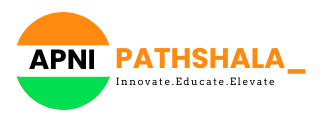Unlocking the Secrets:
Analyze Datasets to Identify Trends and Gain Insights
In today’s data-driven world, information is power. But it’s raw, unrefined data that holds the true potential for game-changing insights. That’s where data analysis comes in – the art of transforming mountains of data into actionable, illuminating trends. By meticulously examining datasets, we can unearth hidden patterns, predict future outcomes, and make informed decisions that propel us forward

Why Analyze Datasets?
The benefits of data analysis are vast and encompass diverse sectors, from business and finance to science and healthcare. Here’s a glimpse of what insights can be gleaned:
- Boosting efficiency: Analyze customer behavior to streamline operations, optimize marketing campaigns, and improve product offerings.
- Predicting trends: Identify market shifts, forecast financial performance, and stay ahead of the competition by uncovering subtle trends.
- Unveiling hidden risks: Detect anomalies and potential issues before they arise, allowing for proactive risk mitigation and damage control.
- Making data-driven decisions: Move beyond gut feelings and intuition. Base your choices on the solid foundation of empirical evidence.
The Art of Data Exploration:
Analyzing datasets isn’t just about crunching numbers. It’s a dance between curiosity, creativity, and meticulousness. Here’s a roadmap to navigate the journey:
- Ask the right questions: Before diving in, define your goals. What are you hoping to learn from the data? Formulating clear questions guides your analysis and prevents aimless wandering.
- Data cleansing and preparation: Data is rarely pristine. Ensure accuracy and consistency by identifying and eliminating errors, outliers, and missing values.
- Exploratory visualization: Let the data paint a picture. Utilize visual tools like charts, graphs, and heatmaps to reveal hidden patterns, identify trends, and spot correlations.
- Statistical analysis: Dive deeper with statistical methods like regressions and hypothesis testing. These techniques quantify relationships and lend weight to your insights.
- Storytelling with data: Don’t let the numbers remain mere numbers. Craft a compelling narrative that translates complex findings into actionable takeaways for audiences, regardless of their technical expertise.
SEO Optimization Tips:
To reach a wider audience and maximize the impact of your analysis, keep these SEO best practices in mind:
- Target relevant keywords: Research and incorporate industry-specific keywords to ensure your content reaches the right eyes.
- Focus on user intent: Understand what your audience seeks and tailor your content accordingly. Provide actionable advice and answer their burning questions.
- Structure your content: Break down complex topics into digestible sections with clear headings and subheadings.
- Link strategically: Connect your analysis to relevant sources and additional resources for further exploration.
- Share and promote: Don’t let your insights gather dust. Utilize social media, email marketing, and other channels to spread the word.
By analyzing datasets and extracting their inherent truths, we unlock a world of possibilities. So, embrace the challenge, delve into the data, and watch as trends emerge, insights surface, and informed decisions pave the way for a brighter future.
